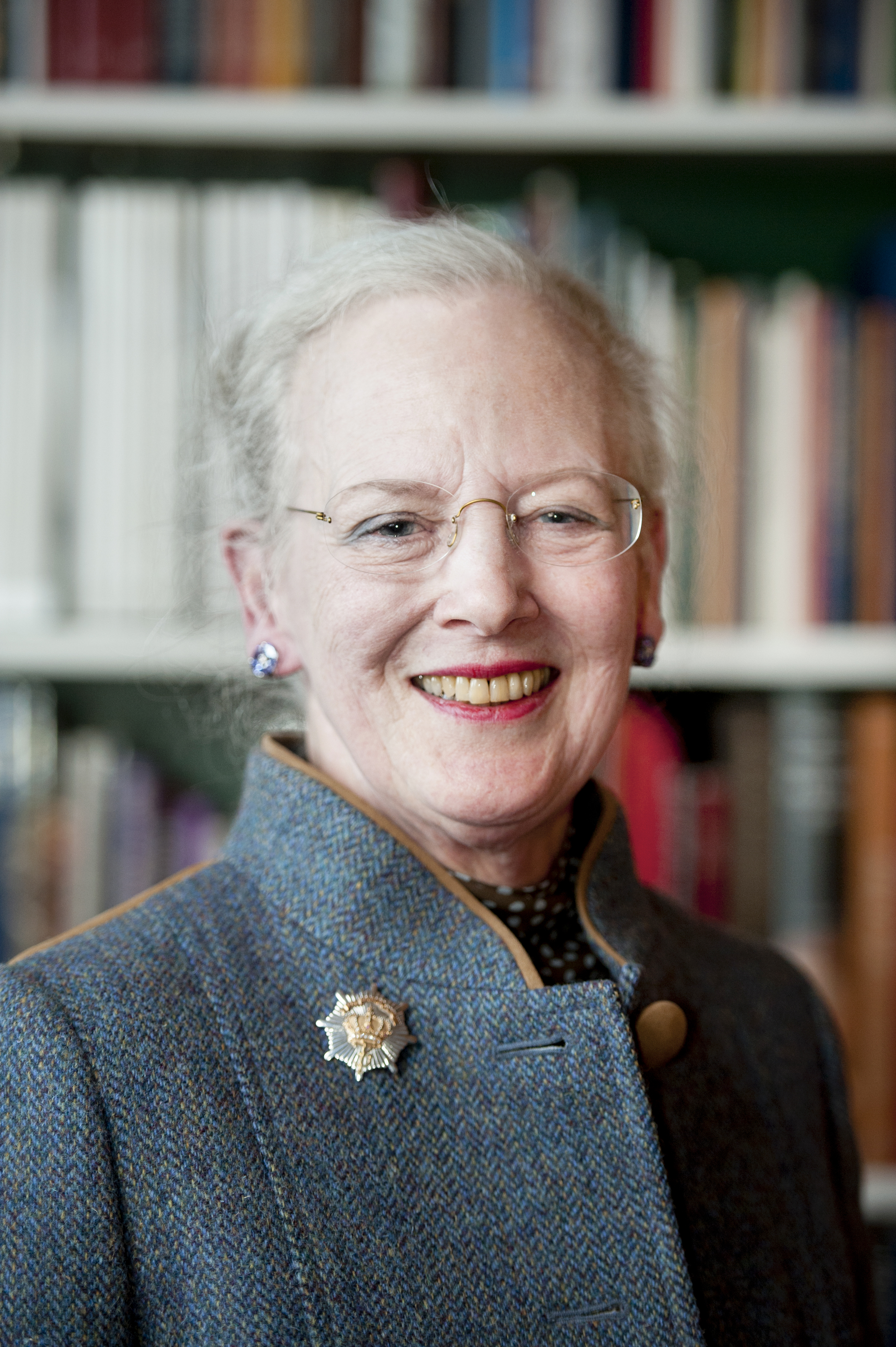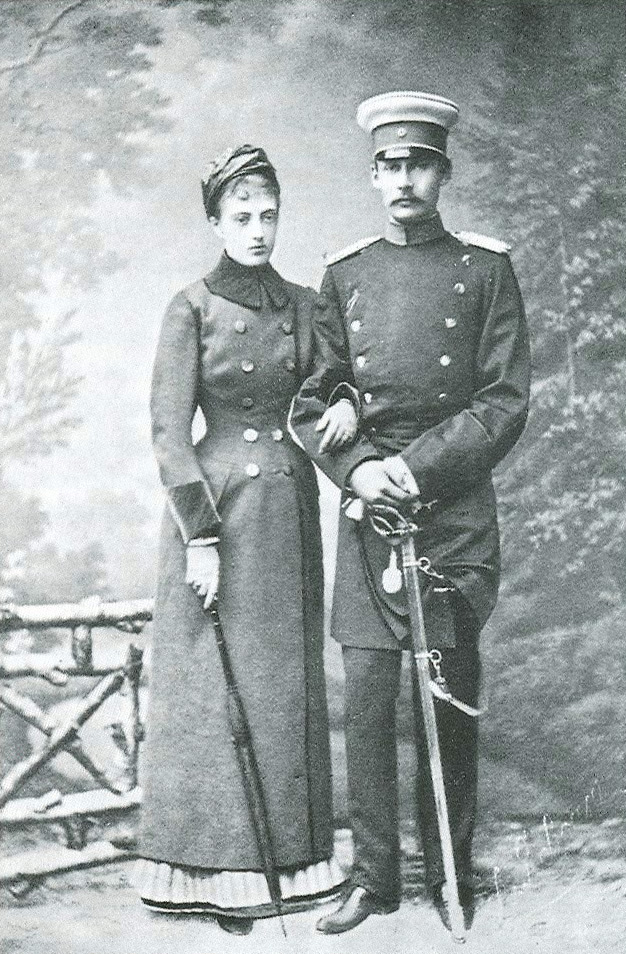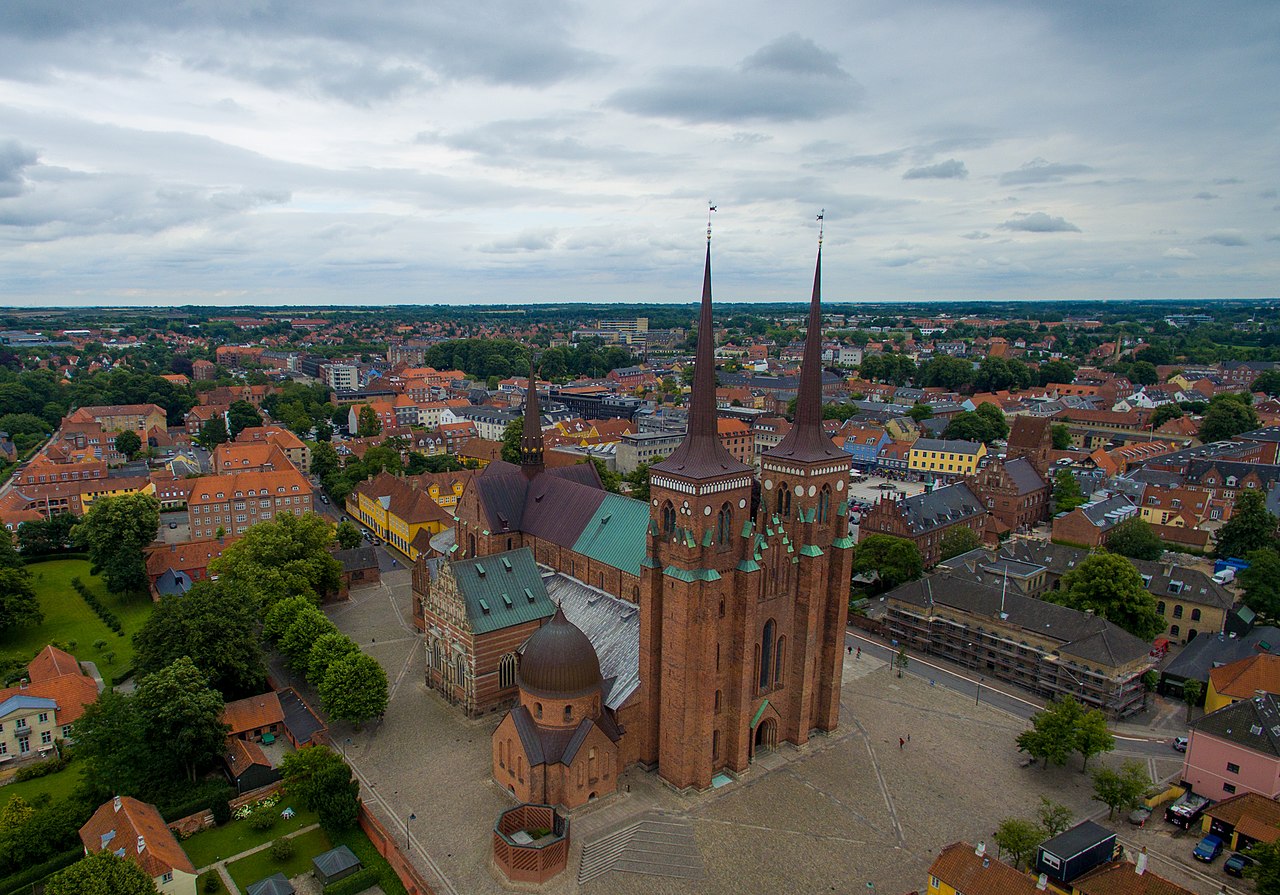by Susan Flantzer
© Unofficial Royalty 2024

Queen Margrethe II of Denmark; Photo: Per Morten Abrahamsen ©
In her New Year’s Speech on December 31, 2023, 83-year-old Queen Margrethe II of Denmark announced that she would abdicate the throne on January 14, 2024, the 52nd anniversary of her accession and the death of her father King Frederik IX. Since the death of Queen Elizabeth II of the United Kingdom on September 8, 2022, Queen Margrethe II had been Europe’s longest-reigning monarch, the world’s only Queen Regnant, and the longest-serving incumbent female head of state. After her abdication, Margrethe held the style and title Her Majesty Queen Margrethe.
Queen Margrethe II had previously said she would never abdicate the throne. In 2012, as she celebrated forty years on the Danish throne, Queen Margrethe II said, “I will remain on the throne until I fall off.” It is thought that no one was aware of Queen Margrethe II’s plan to abdicate with the exception of a few unnamed people, Prime Minister Mette Frederiksen (the second woman to be Prime Minister of Denmark and the youngest prime minister in Danish history), and Queen Margrethe’s first cousin King Carl XVI Gustaf of Sweden (Margrethe’s mother Princess Ingrid of Sweden and Carl Gustaf’s father Prince Gustaf Adolf of Sweden were siblings, the children of King Gustaf VI Adolf of Sweden and Princess Margaret of Connaught (who died before her husband became king).

Queen Mary and King Frederik X; Photo: Hasse Nielsen ©
Upon her abdication, Queen Margrethe II’s elder son fifty-five year old Crown Prince Frederik became His Majesty King Frederik X of Denmark and his Australian-born wife Crown Princess Mary became Her Majesty Queen Mary of Denmark.

Crown Prince Christian; Photo: Dennis Stenild ©
Already styled as His Royal Highness, Frederik and Mary’s elder son eighteen year old Prince Christian (born 2005) became His Royal Highness Crown Prince Christian of Denmark, the heir to the Danish throne.
Queen Margrethe II announces that she will abdicate during her New Year’s Speech
In her New Year’s Speech, Queen Margrethe II stated:
In two weeks time I have been Queen of Denmark for 52 years. Such an amount will leave its mark on anybody – also on me! The time takes its toll, and the number of “ailments” increases. One cannot undertake as much as one managed in the past.
In February this year I underwent extensive back surgery. Everything went well, thanks to the competent health personnel, who took care of me. Inevitably, the operation gave cause to thoughts about the future – whether now would be an appropriate time to pass on the responsibility to the next generation.
I have decided that now is the right time. On 14th January 2024 – 52 years after I succeeded my beloved father – I will step down as Queen of Denmark. I will hand over the throne to my son Crown Prince Frederik.
The last Danish monarch to abdicate was King Erik III in 1146. The reasons for Erik III’s abdication are unclear. His abdication has been explained as his realization of his inability to govern or an illness that ultimately killed him. After abdicating, Erik III entered St. Canute’s Abbey in Odense, Denmark, where he died on August 27, 1146, soon after his abdication, and was buried at St. Canute’s Abbey.
********************
Abdications in the 21st Century

King Juan Carlos of Spain signing his abdication law, witnessed by Prime Minister Mariano Rajo; Credit – By Ministry of the Presidency. Government of Spain, Attribution, https://commons.wikimedia.org/w/index.php?curid=33464373
Before the abdication of Queen Margrethe II, in the 21st century, there were nine voluntary abdications. Except for one abdication due to illness, the abdications occurred to pass the throne to the heir sooner. In Luxembourg and the Netherlands, there is a history of such abdications. In Luxembourg, although Grand Duchess Marie-Adélaïde abdicated in 1919 in favor of her sister Charlotte due to political reasons, Grand Duchess Charlotte abdicated in favor of her son Jean and Grand Duke Jean abdicated in favor of his son Henri. In the Netherlands, the last three monarchs, all Queens – Wilhelmina, Juliana, and Beatrix – abdicated in favor of their heirs. With people living longer, it may be likely that we will see more monarchs abdicating to pass their thrones to their heirs sooner.
- October 7, 2000 – Grand Duke Jean of Luxembourg abdicated in favor of his son Henri.
- October 7, 2004 – King Norodom Sihanouk of Cambodia abdicated in favor of his son Norodom Sihamoni.
- January 4, 2005 – Emir Saad Al-Abdullah Al-Salim Al-Sabah of Kuwait abdicated due to illness. The Kuwaiti Cabinet nominated Prime Minister Sabah bin Ahmad Al-Sabah to become the next Emir.
- December 9, 2006 – King Jigme Singye Wangchuck of Bhutan abdicated in favor of his son Jigme Khesar Namgyal Wangchuck.
- April 30, 2013 – Queen Beatrix of the Netherlands abdicated in favor of her son Willem-Alexander.
- June 25, 2013 – Emir Hamad bin Khalifa Al Thani of Qatar abdicated in favor of his son Tamim bin Hamad Al Thani.
- July 21, 2013 – Albert II, King of the Belgians abdicated in favor of his son Philippe.
- June 19, 2014 – King Juan Carlos I of Spain abdicated in favor of his Felipe VI.
- April 30, 2019 – Emperor Akihito of Japan abdicated in favor of his son Naruhito.
********************
Events on Sunday, January 14, 2024

Christiansborg Palace; Credit – By Johannes Jansson/norden.org, CC BY 2.5 dk, https://commons.wikimedia.org/w/index.php?curid=24985586
The succession of King Frederik X took place during a meeting of the Council of State in the State Council Hall at Christiansborg Palace, the seat of the Danish Parliament, in Copenhagen, the capital of Denmark, at the moment Queen Margrethe II signed the declaration of her abdication. Denmark does not have a coronation. Denmark formerly had a coronation but in 1660, the coronation was replaced with a ceremony of anointing. The new monarch would arrive at the coronation site already wearing the crown and was then anointed.
Queen Margrethe II and her husband Prince Henrik, Prince Consort of Denmark wave from the balcony at Christiansborg Palace on January 15, 1972 after the proclamation of her succession to the Danish throne. The couple’s two young sons Frederik and Joachim can be seen.
The ceremony of anointing was abolished with the introduction of the Danish Constitution in 1849, and a simple proclamation has been used since then. Denmark does have regalia but it plays no role in the ceremonies for a new monarch. Now, a public announcement of a new monarch’s accession is made from the balcony of Christiansborg Palace. The new king or queen is presented and proclaimed by the Prime Minister, followed by a ninefold “hurrah” by the crowds below.

Amalienborg; Credit – By Rob Deutscher from Melbourne, Australia – Amalienbor Plads and Opera House_Copenhagen, CC BY 2.0, https://commons.wikimedia.org/w/index.php?curid=25648566
Amalienborg in Copenhagen, Denmark is the official residence of the Danish royal family. It consists of four identical classical palaces around an octagonal square. Frederik VIII’s Palace is the northeastern palace and has been the home of King Frederik X and Queen Mary since their marriage in 2004. Christian IX’s Palace is the southeastern palace and has been the home of Queen Margrethe II since 1967. Both King Frederik X and his family and Queen Margrethe II will remain at their respective homes.
Below is the program for the abdication of Queen Margrethe II and the accession of King Frederik X. The times listed are Danish times.
Crown Prince Prince Frederik, Crown Princess Mary & Prince Christian traveled to Christiansborg Palace
13:35 – Crown Prince Frederik, Crown Princess Mary, and their elder son Prince Christian left their home Frederik VIII’s Palace, Amalienborg in Copenhagen, and traveled by car to Christiansborg Palace, the seat of the Danish Parliament in Copenhagen.
Queen Margrethe traveled to Christiansborg Palace to abdicate
13:37 – Queen Margrethe II left her home Christian IX’s Palace, Amalienborg in Copenhagen, and traveled by carriage to Christiansborg Palace escorted by the Guard Hussar Regiment.

Queen Margrethe II, Crown Prince Frederik, and Prince Christian meeting with the Council of State Photo: Keld Navntoft, Kongehuset © File type: jpg
14:00 – Queen Margrethe II, Crown Prince Frederik, and Prince Christian met with the Council of State in the State Council Hall at Christiansborg Palace. The succession of the Danish throne took place during the Council of State meeting at the moment when Queen Margrethe II signed a declaration of her abdication. Queen Margrethe then gave up her seat and offered it to the new King. At the same time, the new heir to the throne, Crown Prince Christian, took the seat to the right of the King. After this, the visibly-moved Queen Margrethe said “Gud bevare kongen” (God save the king) and left the State Council Hall.
Queen Margrethe, after her abdication, on her way to her home Christian IX’s Palace
14:15 – Queen Margrethe left Christiansborg Palace and traveled by car to her home Christian IX’s Palace, Amalienborg.
14:30 – King Frederik X and Queen Mary held a reception for invited people at Christiansborg Palace.
Prime Minister Mette Frederiksen proclaimed King Frederik X’s accession to the throne
15:00 – King Frederik X stepped out on the balcony of Christiansborg Palace and Prime Minister Mette Frederiksen proclaimed King Frederik X’s accession to the throne. According to Danish state custom, the Prime Minister proclaimed three times: “Her Majesty Queen Margrethe II has abdicated. Long live His Majesty King Frederik X!” This was followed by the traditional ninefold cheer from the crowd of tens of thousands who turned out to witness the proclamation.
King Frederik X spoke after his proclamation as Prime Minister Mette Frederiksen stood next to him
15:00 – King Frederik X gave a short speech,”My mother, Her Majesty Queen Margrethe II, has ruled Denmark for 52 years. For half a century, she has followed the times with our common heritage as a starting point. She will always be remembered as a Monarch beyond the ordinary. Like few, my mother has managed to be at one with her kingdom. Today, the throne passes on. My hope is to become an unifying king of tomorrow. It’s a task I’ve been waiting for all my life. It is a responsibility I take on with respect, pride and great joy. It is a deed I will take pains to carry out and carry through the position I have been entrusted with. I need all the support I can get. From my beloved wife, from my family, from you and from that which is greater than us. I face the future knowing that I am not alone.”
King Frederik X announced his motto, “Bound, committed, for the Kingdom of Denmark.”
Left to right: Princess Isabella, Crown Prince Christian, King Frederik X, Queen Mary, Princess Josephine, and Prince Vincent
After his speech, King Frederik X was joined on the balcony by his family: Queen Mary, Crown Prince Christian, Princess Isabella, and twins Prince Vincent and Princess Josephine.
15:10 – After the proclamation, an honorary cannon salute was fired from the Sixtus Battery at Holmen Naval Base in Copenhagen.
The royal standard was raised over King Frederik X’s home Frederik VIII’s Palace, Amalienborg
15:10 – After the proclamation, the royal standard was lowered at Queen Margrethe’s home Christian IX’s Palace and then raised at King Frederik X’s home Frederik VIII’s Palace, Amalienborg.
King Frederik X and Queen Mary rode in a carriage to their home Frederik VIII’s Palace
15:30 – After the proclamation, King Frederik X and Queen Mary rode in a carriage, escorted by the Guard Hussar Regiment’s mounted squadron, from Christiansborg Palace to their home Frederik VIII’s Palace, Amalienborg.
17:00 – The royal colors were transferred from Queen Margrethe’s home Christian IX’s Palace to Frederik VIII’s Palace, King Frederik X’s home.
Read news articles from January 14, 2024 regarding the abdication and accession at the link below.
********************
Event on Monday, January 15, 2024
The Danish Parliament acknowledges the Danish Royal Family, seated above the clock
10:00 – King Frederik, Queen Mary, Crown Prince Christian, Queen Margrethe, Prince Joachim (Queen Margrethe’s younger son) and Princess Benedikte (Queen Margrethe’s sister) participated in the Danish Parliament’s celebration of the succession of the throne. During a meeting at Christiansborg Palace, the seat of the Danish Parliament, Speaker of the Parliament Søren Gade and Prime Minister Mette Frederiksen delivered speeches and the Prime Minister read an announcement from King Frederik X to the Danish Parliament. Afterward, the Royal Family and members of Parliament took part in a reception.
1st row: Crown Prince Christian, Queen Mary, King Frederik X. 2nd row: Princess Benedikte, Prince Joachim, Queen Margrethe
********************
Event on Sunday, January 21, 2024

Aarhus Cathedral; Credit – Wikipedia
14:00 – The Royal Family participated in a celebratory church service at Aarhus Cathedral in Aarhus, Denmark, an Evangelical Lutheran church, sometimes called the Church of Denmark, the established, state-supported church in Denmark. The service was led by Henrik Wigh-Poulsen, Royal Chaplain-in-Ordinary and Bishop of the Diocese of Aarhus and attended by various Danish officials and representatives from the City of Aarhus.
Read more about the Danish monarchy at
This article is the intellectual property of Unofficial Royalty and is NOT TO BE COPIED, EDITED, OR POSTED IN ANY FORM ON ANOTHER WEBSITE under any circumstances. It is permissible to use a link that directs to Unofficial Royalty.
Works Cited
- Flantzer, Susan. (2023). Which monarchies have coronations? What succession ceremonies do other monarchies have?. Unofficial Royalty. https://www.unofficialroyalty.com/which-monarchies-have-coronations-what-succession-ceremonies-do-the-other-monarchies-have/
- Mehl, Scott. (2014). Queen Margrethe II of Denmark. Unofficial Royalty. https://www.unofficialroyalty.com/queen-margrethe-ii-of-denmark/
- Programme for the Succession of the Throne. Kongehuset (Danish Royal House). (2024). https://www.kongehuset.dk/en/news/programme-for-the-succession-of-the-throne
- Read HM The Queen’s New Year Address 2023. Kongehuset (Danish Royal House). https://www.kongehuset.dk/en/news/read-hm-the-queens-new-year-address-2023
- Wikimedia Foundation. (2024). Abdication of Margrethe II. Wikipedia. https://en.wikipedia.org/wiki/Abdication_of_Margrethe_II


























































